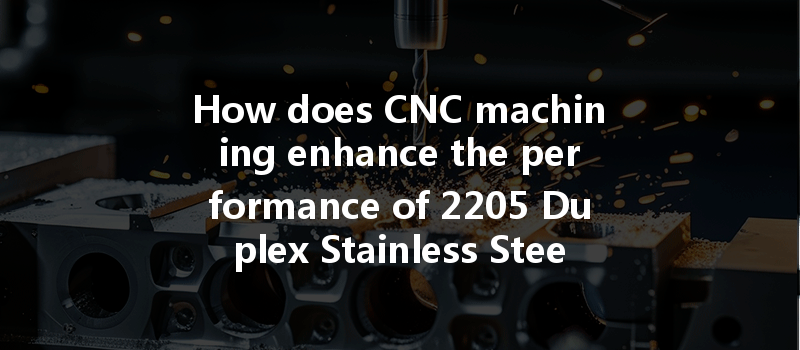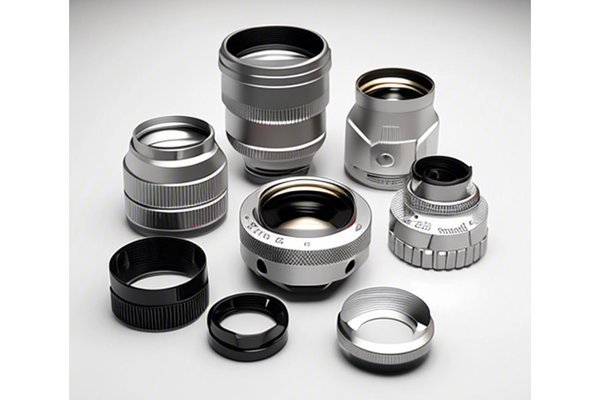Did you know that duplex stainless steels, specifically the 2205 grade, offer a unique combination of strength and corrosion resistance that outperforms many traditional stainless steels? In a world where the demand for durable and reliable materials is rising, 2205 duplex stainless steel has gained significant attention in various industries, particularly in oil and gas, marine, and chemical processing applications.
But what makes CNC (Computer Numerical Control) machining so crucial in enhancing the performance of 2205 duplex stainless steel parts? How does this technology optimize their structural and functional attributes? This blog will delve deep into these questions while exploring the machining processes, advantages, and nuances involved in working with this remarkable material.
—
Understanding 2205 Duplex Stainless Steel
What is Duplex Stainless Steel?
Duplex stainless steel is a type of steel that contains a mix of austenitic and ferritic stainless steel. This unique composition provides enhanced strength and corrosion resistance compared to traditional austenitic or ferritic stainless steels alone. Specifically, 2205 duplex stainless steel comprises about 22% chromium, 5% nickel, and 3% molybdenum, which contribute to its impressive properties.
Properties of 2205 Duplex Stainless Steel
The superior attributes of 2205 duplex stainless steel make it a go-to choice for many applications:
These attributes do not come at random. They are the result of a careful combination of chemical composition and the machining processes applied.
—
The Role of CNC Machining in Enhancing 2205 Duplex Stainless Steel Parts
to CNC Machining
CNC machining is a subtractive manufacturing technique that utilizes automated tools to remove material from a workpiece according to precise specifications programmed into a computer. This technology has revolutionized the manufacturing process, offering unparalleled accuracy, repeatability, and efficiency.
Benefits of CNC Machining for 2205 Duplex Stainless Steel
—
Machining Processes Applied to 2205 Duplex Stainless Steel
Turning
Turning is a machining process where the workpiece is rotated while a stationary cutting tool removes material. This method is particularly effective for producing cylindrical shapes and can achieve high dimensional accuracy.
Techniques for Turning 2205 Duplex Stainless Steel
Milling

Milling involves using rotating cutters to remove material from a stationary workpiece. It is widely used for creating complex parts, grooves, and flat surfaces.
Techniques for Milling 2205 Duplex Stainless Steel
Drilling
Drilling is commonly used to create holes in various materials, including 2205 duplex stainless steel.
Techniques for Drilling 2205 Duplex Stainless Steel
—
Addressing Common Challenges in CNC Machining of 2205 Duplex Stainless Steel
Work Hardening
Problem: Work hardening occurs when the material is subjected to deformation at elevated temperatures, making further machining difficult.
Solution: Employing adequate lubrication, controlling cutting speeds, and selecting the right tooling can mitigate the risks of work hardening.
Tool Wear
Problem: The abrasive nature of duplex stainless steel can lead to faster tool wear.
Solution: Utilizing ceramic or coated carbide tools designed for high wear resistance prolongs tool life and maintains machining efficiency.
Surface Finish Quality
Problem: Poor surface finish can undermine the material’s benefits.
Solution: Monitoring and adjusting machining parameters (like cutting speed and feed rate) ensures optimal surface quality and composition.
Dimensional Tolerances
Problem: Achieving tight tolerances can be challenging with duplex stainless steel.
Solution: Implementation of advanced CNC technology and regular inspection can ensure adherence to tolerances throughout the machining process.
—
CNC machining plays a pivotal role in enhancing the performance and usability of 2205 duplex stainless steel parts across diverse industries. By marrying advanced technology with the inherent properties of duplex stainless steel, manufacturers are able to create components that not only meet stringent design specifications but also excel in performance.
In this blog, we explored the unique attributes of 2205 duplex stainless steel, the significant advantages provided by CNC machining, and the intricate processes that channel its properties into high-functioning industrial applications. Understanding how specifically tailored machining techniques can unlock the full potential of this material is essential for industries looking to enhance the integrity and longevity of their products.
As the manufacturing landscape continues to evolve, embracing the capabilities of CNC machining will remain crucial in addressing modern engineering challenges. Whether you’re a manufacturer, engineer, or enthusiast, reflecting on the nuances disclosed in this article fortifies the knowledge that’s essential to navigate the complexities of machining 2205 duplex stainless steel.
Let this blog inspire further investigation and innovation in your manufacturing endeavors, as the efficient and effective use of advanced materials like 2205 duplex stainless steel is more than just a technical necessity—it’s a strategic imperative in today’s highly competitive market.






